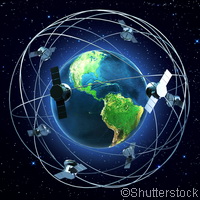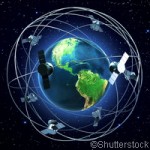
 A European team of researchers led by the Ecole Polytechnique Fédérale de Lausanne (EPFL) in Switzerland has developed a prototype of a new, ultra-compact motor that will enable small satellites to journey beyond Earth’s orbit.
A European team of researchers led by the Ecole Polytechnique Fédérale de Lausanne (EPFL) in Switzerland has developed a prototype of a new, ultra-compact motor that will enable small satellites to journey beyond Earth’s orbit.
The objective of this new motor is to make space exploration less expensive. The result is an outcome of the MICROTHRUST (‘Microelectromechanical systems (MEMS)-based electric micropropulsion for small spacecraft to enable robotic space exploration and space science’) project, which is supported under the Space Theme of the EU’s Seventh Framework Programme (FP7), to the tune of EUR 1.9 million.
The compact motor weights only a few hundred grams and is specifically designed to propel small satellites, weighing from 1 to 100 kilograms. The conventional thruster can change orbit around our planet and travel to more distant destinations, but it is usually used for large and expensive spacecraft. The researchers say their prototype will probably be used on CleanSpace One, a satellite currently being developed at EPFL that will clean up space debris, as well as on OLFAR, a swarm of Dutch nanosatellites able to record ultra-low radio-frequency signals on the far side of the Moon.
The prototype weighs only around 200 grams, with the fuel and control electronics included. The motor can be mounted on satellites as small as 10 x 10 x 10 square cubic metres. It is also very efficient.
‘At the moment, nanosatellites are stuck in their orbits. Our goal is to set them free,’ said Herbert Shea, the head of EPFL’s Microsystems for Space Technologies Laboratory and the coordinator of the MICROTHRUST project.
Research into the development of small satellites has intensified in recent times, due mostly to the low cost of production and launch. The price tag for the small satellites is around USD 500 million; the price for larger ones runs into the hundreds of millions. The problem with nanosatellites lay in the lack of an efficient propulsion system … until now.
The new mini motor does not run on combustible fuel but rather on an ‘ionic’ liquid, and in this project, it is a liquid chemical compound, EMI-BF4, used as both a solvent and an electrolyte. It is made up of ions, electrically charged molecules, which are extracted from the liquid and then ejected to produce thrust. The fuel is expelled, not burnt.
‘We calculated that in order to reach lunar orbit, a 1-kilogram nanosatellite with our motor would travel for about 6 months and consume 100 millilitres of fuel,’ said Muriel Richard, a scientist in EPFL’s Swiss Space Center.
‘Our prototype still has a few flow problems at the nozzle extremities, which could cause short-circuits,’ Dr Shea concluded.
Researchers from the Netherlands, Sweden and the United Kingdom, members of the MICROTHRUST consortium, also contributed to this study.



